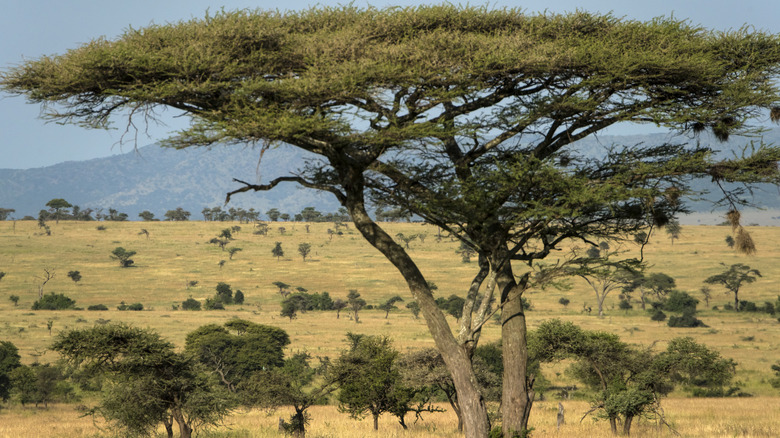Names Of Plants That Live In Grasslands
As the name implies, the grasslands are full of many types of grasses. Well, that is to say, if you call them grasslands, as they go by many names throughout the world, including prairies, pampas, steppes, and savannas. Perhaps the best way to examine the different types of grassland plants is to explore the two main types of grasslands: temperate and tropical.
Temperate grassland plants
Wildflowers tend to thrive in the temperate grassland. That's because grasses and wildflowers both tend to grow quickly from the bottom up, whereas trees and shrubs are easily killed by fires and usually require a lot of water to grow large. Common flowers in these regions include: blazing stars, goldenrods, asters, milkweed, lupines, purple coneflower, clovers, sunflowers, and wild indigos.
Temperate grassland agricultural use
One of the more depressing temperate grassland facts is that all but 2% of the prairie land native to the United States has been converted into farmland or urban areas. The soil in these regions is particularly rich and fertile, which is why it has been so productive when converted to farmland.
While the plants growing in these areas are obviously not native to the temperate grasslands, it is worth knowing what crops are most frequently grown in this region, as these are now the most common plants grown in what was once America's native temperate grassland biome. The plants most commonly grown for agricultural purposes in this area are grains including corn, wheat, oat, rye, and hay, although potatoes are also a popular crop.
Tropical grassland plants
Whereas the temperate grasslands get about 10 to 30 inches of rain per year, the tropical grasslands receive 20 to 50. Additionally, they don't go through a cold, dormant period but instead sometimes go through a dry, hot season when some plants go dormant. All of this means more trees (though there are still many fires, so these trees must be fire and drought resistant) and taller grasses, usually between 3 and 6 feet tall, although elephant grass can grow as tall as 10 feet.
Common grasses in tropical grasslands include Bermuda grass, elephant grass, blue fescue, feather grass, Rhodes grass, red oats grass, and lemon grass. These grasses generally go dormant during the dry period and then grow rapidly during the wet season.
While there may be more trees in the tropical grasslands, they need to be specially adapted to this region that has porous, unfertile soil, many droughts, and frequent fires. There are also more large and diverse animals in these regions, so trees need to protect themselves from grazers. As a result, many trees in these areas have deep roots, thick bark, and toxic sap to prevent animals from stripping their sparse vegetation. Common trees in this biome include the candelabra tree, whistling thorn, jackalberry tree, umbrella thorn acacia, kangaroo paw tree, boabab, maketti tree, river bushwillow, and black chokeberry.
References
- National Geographic: Grasslands, Explained
- Blue Planet Biomes: North American Prairie
- Gardenerdy: Grassland Plants
- Defenders of Wildlife: Temperate Grasslands
- ScienceStruck: Grassland Biome: Animals and Plants Inhabiting This Natural Wonder
- Kids Do Ecology: Grassland
- Arizona State University Ask a Biologist: Grass Patches... and a Few Trees
